31 African Rock Python Facts (Both Species) Africa’s Largest Snake
In this post, you’ll learn 31 facts about the African rock python. It is the largest snake in Africa – and one to be careful about. You’ll learn about its habitat, size, lifespan, diet, range, threats, and much more. Plus lots of photos and an amazing video!
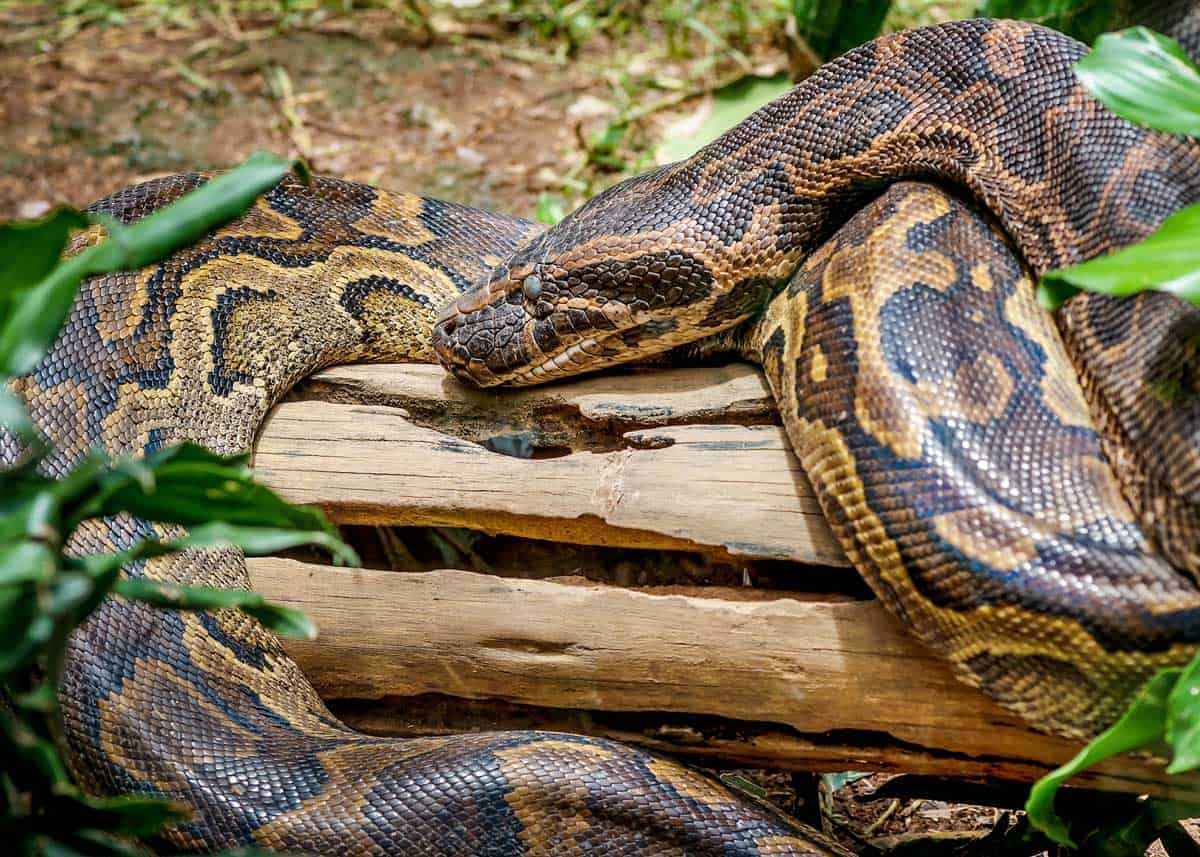
For your safety: we recommend a good pair of binoculars and a good safari-grade camera with zoom lens. These will allow you to see and shoot African rock pythons without risking a face-to-face encounter.
31 Facts About African Rock Pythons
African rock pythons are some of the biggest, baddest snakes in the animal kingdom. They’re also subject to a lot of misinformation by people who fear or glorify them.
The good news is that they’re still interesting to learn about even when you peel back the myths and look at the truths, so here are 31 rock python facts for you to enjoy!
1. Do pythons live in Africa? What areas do they inhabit?
There are a lot of snakes in Africa, including several members of the python family. They occupy the entire continent.
As for African rock pythons, there are two species:
- Python sebae (African rock python) is found in Central and West Africa (Senegal, Ethiopia, Uganda)
- Python natalensis (Southern African python) is found in Southern Africa (Kenya, Zimbabwe, South Africa).
The second type is known to be smaller, but when we’re talking about 10-foot snakes, that doesn’t always mean a lot.
According to the following map, both species of the Africa Rock Python can be found in much of the African continent.
2. Natural Range of African Rock Pythons (Both Species)
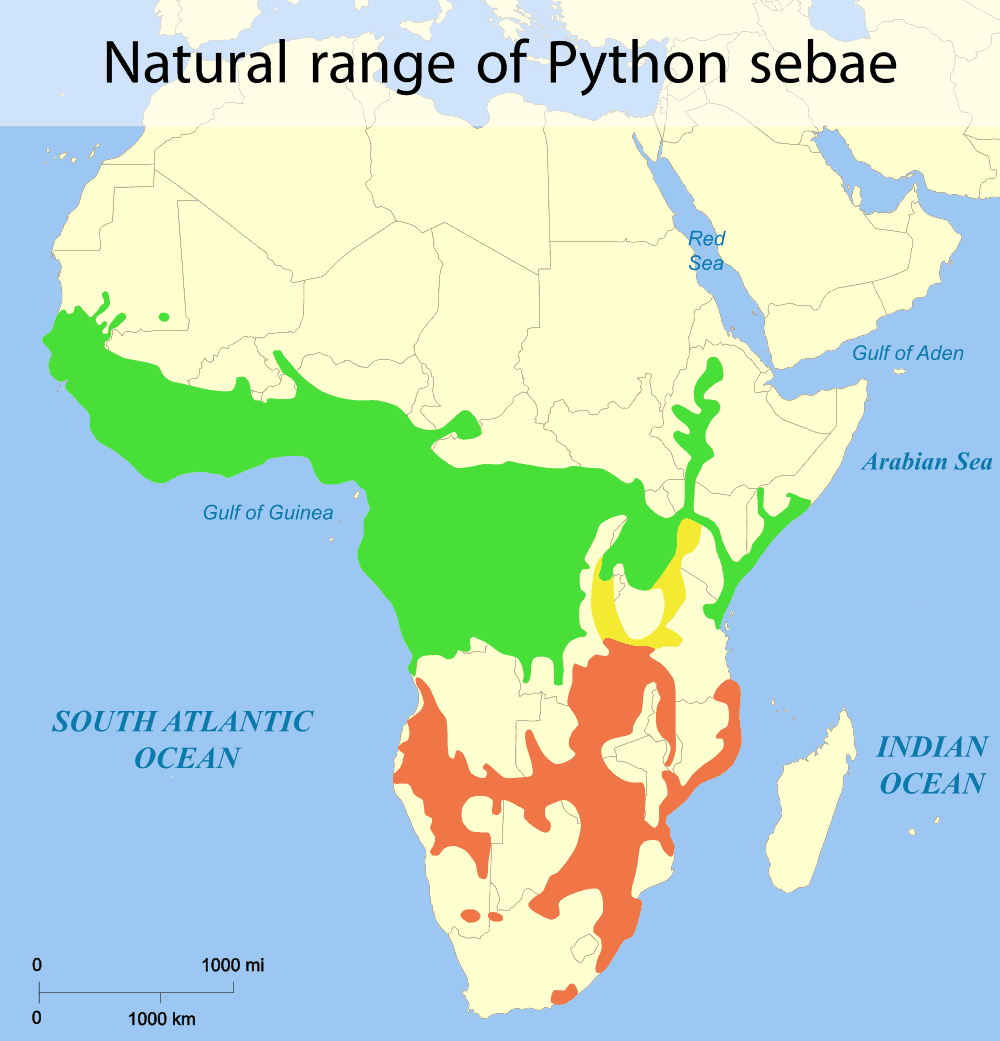
Python sebae Gmelin, 1788
- Green: Habitat of Python sebae
- Rust: Habitat of Python natalensis
- Yellow: Hybrid zone of the two races
3. Is Python natalensis a subspecies of the African Rock Python?
No. The Southern African Python (Python natalensis) used to be known as a subspecies of the African Rock Python (Python sebae sebae) but it is now considered its own species.
The Southern African Python is also known as Suider-Afrika Luislang.
This post covers details and facts of both species.
4. What is the habitat of the African rock python?
African rock pythons are unique in the sense that they can survive just about anywhere. Unlike other snakes that are limited to specific types of environments, African rock pythons can thrive in deserts, forests and swamps alike.
That said, African rock pythons tend to congregate around places with water. They’re usually found near rivers, lakes, streams and marshes.
While they don’t actually live in the water, they’re good swimmers that can stay under the surface for a long time, and this helps them to ambush their prey as other animals come to drink.
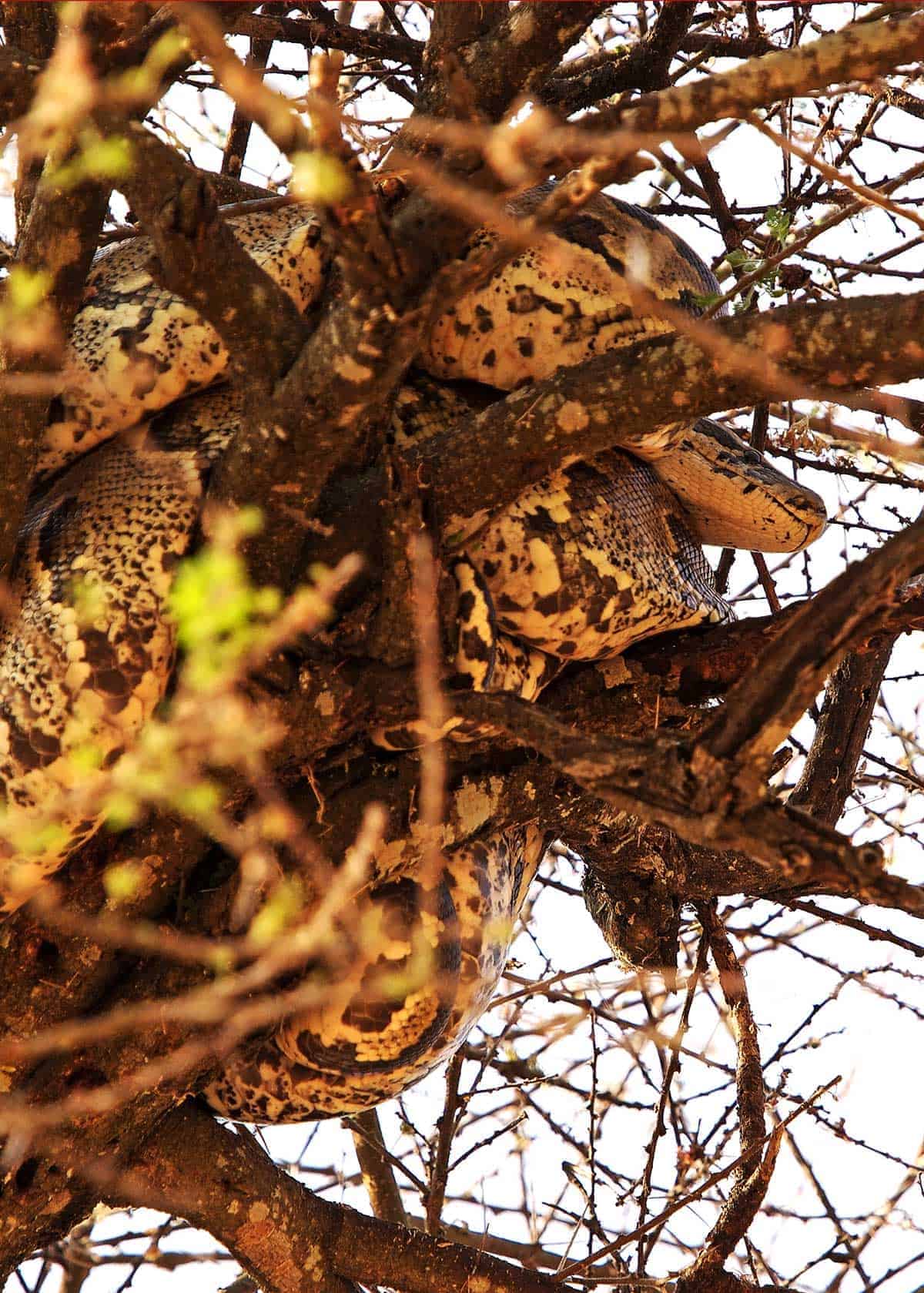
Heading on a safari? Don’t forget a thing with our African Safari Packing List
5. Are African rock pythons poisonous?
No. African rock pythons are non-venomous snakes, so they can’t poison their prey. They don’t even have fangs.
Before you give them a smooch, however, you should know that they do have sharp, pointed, and needle-like teeth that they use to immobilize their prey.
Once the animal has been bitten and caught, the African rock python wraps around it and slowly constricts until the animal dies. That’s how all pythons kill.
6. Are African rock pythons dangerous? Are they aggressive?
The answer to both of these questions is “yes” and “oh, yes.”
While not as aggressive as something like a king cobra, African rock pythons aren’t docile animals. They strike quickly and unexpectedly as ambush predators, and they get territorial when it comes to things like feeding, nesting, and protecting their young. They don’t even like to live with others of their kind. They’re solitary snakes.
African rock pythons are also known for their fearlessness in taking down large animals. Have you ever heard stories of gigantic snakes gorging themselves so much that they can’t even move? That’s the African rock python. It isn’t uncommon for a python to literally bite off more than it could chew.
7. Can an African rock python eat a human? Has anyone ever been eaten by an African rock python?
Yes.
Generally speaking, African rock pythons aren’t considered a huge risk to humans. They’re a staple of African safaris and zoos, and some are even bred and hatched in captivity to be sold as pets.
However, there have been shocking reports of deaths caused by African rock pythons. The victims are usually strangled and not swallowed, but there are a few “man-eating” incidents on record as well. Children are the most frequent targets. In one particularly gruesome incident, an African rock python swallowed a 10-year-old boy whole.
It’s assumed that African rock pythons go after humans when they’re extremely hungry. Many of the recorded deaths are right after their dormant season.
Stay safe and watch these from a distance. Here are the 12 best binoculars for the money.
8. Do African rock pythons hibernate?
Wait, you might be saying. What’s a dormant season?
African rock pythons don’t hibernate, but they get less active during the various “dry seasons” of their regions. These are also called “dormant seasons” for pythons since they don’t hunt, nest, mate or explore new territory like they usually do.
The exact dormant season for an African rock python will depend on the weather in their country.
9. What is the coloring of the African rock python? What do they look like? Do they have any special features?
African rock pythons are usually a combination of grey, brown and bronze. They have irregular “spots” or “splotches” that can range from bright yellow to dark green, and there’s always a spearhead shape on their snout in various colors. Like all snakes, they have triangular heads and a body covered in smooth scales.
One of the more distinctive features of the African rock python is the set of triangular markings under their eyes. These are called sub-ocular marks, and they can be used to distinguish African rock pythons from other snakes of similar sizes and colorings.
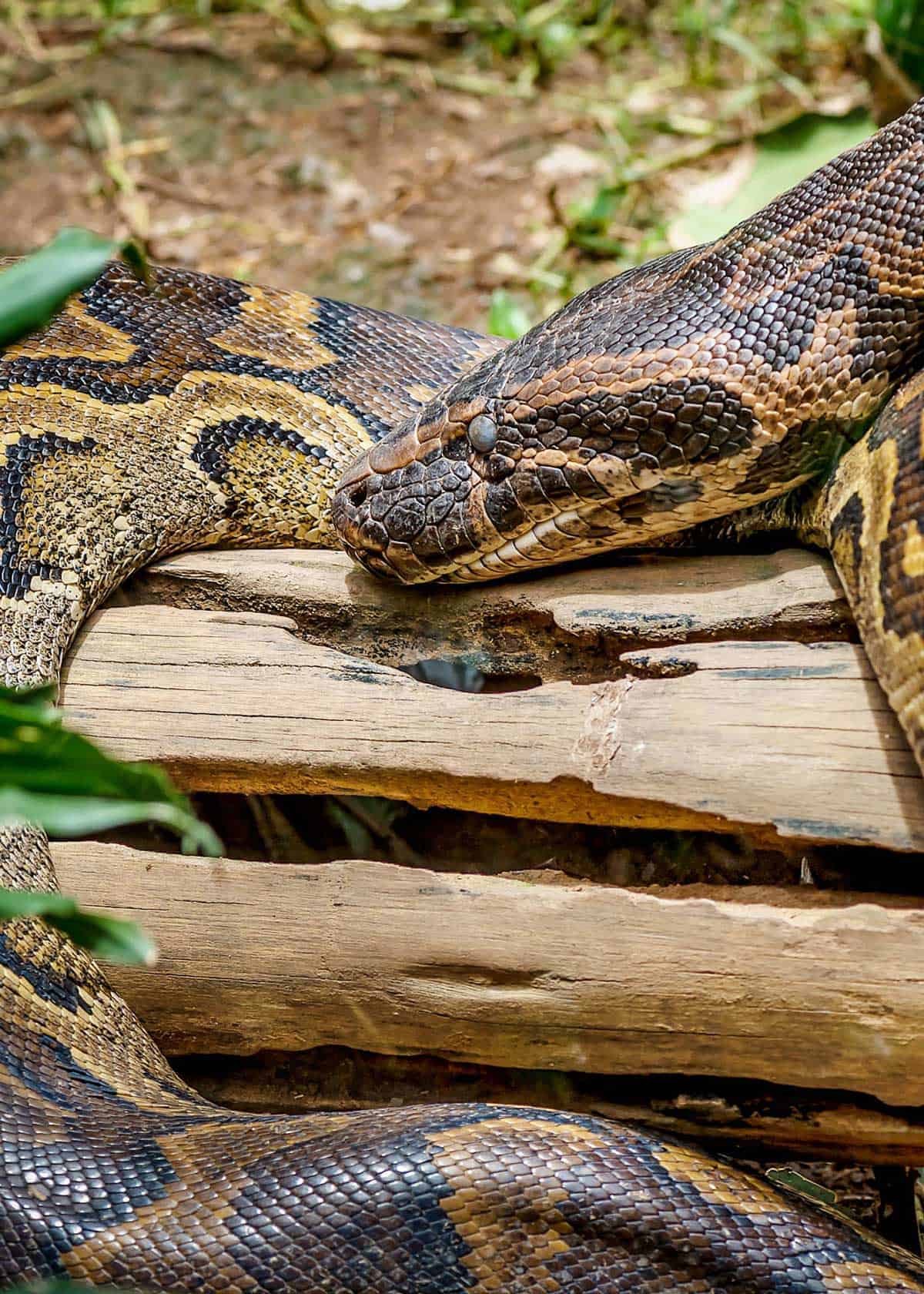
How’s your Swahili? Check out our guide to 100+ animal names in Swahili.
10. How long is the African rock python? How much do they weigh?
African rock pythons are usually around 10 – 15 feet long. However, larger specimens can be up to 20 feet, and there are unconfirmed reports of super-sized African rock pythons exceeding 25 feet.
As for weight, they’re very solid, thickly-built snakes with heavy bodies. They officially hover around 90 – 120 pounds, but unconfirmed reports have put them at 200 pounds or more.
Long story short, they’re big snakes.
11. Are there size differences between male and female African rock pythons?
Yes, but it might not be in the way that you think. While it’s common in the animal kingdom for males to be bigger than females, the opposite is true for African rock pythons. Their females are larger by anywhere from 1 – 10 feet.
12. Is the African rock python the biggest snake in the world?
Not quite. Here are the top five largest snake species by length and weight:
- Green anaconda
- Burmese python
- Reticulated python
- African rock python
- Indian python
As you can see, African rock pythons are the third-largest python and fourth-largest snake, but they aren’t quite as massive as their cousins.
However, they are the biggest snake species in Africa. The others on this list are all located in Asia and South America.
13. Is the African rock python an invasive species?
Yes. African rock pythons are such fearless animals that they tend to make themselves at home wherever they go, and this results in a lot of environments and ecosystems being disrupted when the pythons come to stay. They’ve invaded everything from national parks to rural sugar cane fields, and they don’t care what was there first.
Most of their traveling is done in their native Africa, but they’ve also caused problems in America, Canada, and Australia after escaping from exotic pet stores. They even caused a panic in the Everglades when the press got wind of “man-eating snakes” slinking through their land.
14. What’s the average lifespan of the African rock python?
African rock pythons live around 20 – 30 years. According to the Max Planck Institute for Demographic Research, the oldest African rock python in captivity was a female that lived for 27.3 years, but evidence suggests that they might live even longer in the wild.
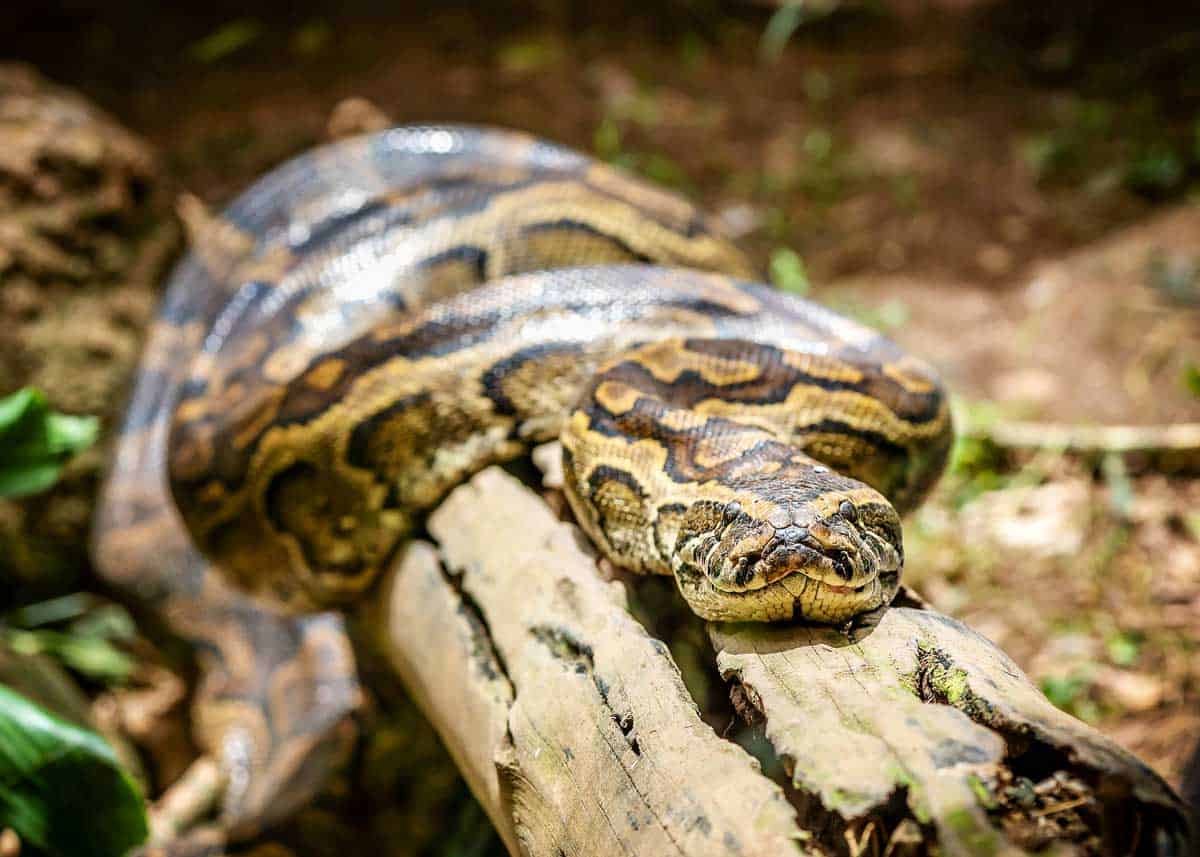
Learn more about things to do in Uganda
15. How do African rock pythons perceive the world?
You’ve probably heard that snakes have poor eyesight. This is also true of African rock pythons. They aren’t blind, but they don’t perceive much with their eyes; instead, they rely on a complex network of sensory organs in and around the face.
- The big thing is their tongue. The tongues of African rock pythons are able to “smell” the surrounding environment thanks to special receptors in the tissue. If prey is nearby, their tongues will sense it.
- African rock pythons also have a little organ above their nasal cavity called the vomeronasal organ. The vomeronasal organ (also called Jacobson’s organ) can detect pheromones in the air, so it’s very useful in pinpointing the location of nervous or frightened prey.
- Finally, African rock pythons have heat-sensing pits in their scales that can help them locate both predators and prey. It works a little like infrared technology for snakes. The pits can detect heat patterns in the atmosphere around them, and when combined with other pheromone- and odor-tracking sensors, they turn the python into an incredible hunter. It doesn’t even matter that their eyesight is limited.
16. Is the African rock python endangered?
African rock pythons won’t go extinct anytime soon, but they’re being watched by groups like the Convention on International Trade in Endangered Species (CITES) because of poaching and habitat loss.
These groups have even created Python Conservation Partnerships as a means of conservation and protection. African rock pythons might not be officially endangered, but they’re vulnerable.
17. Can African rock pythons be tamed?
It’s complicated.
Most people agree that African rock pythons make poor pets, especially when they’re captured and taken out of the wild. They don’t respond well to cages, and they’ll lash out at attempted human handling.
However, there’s been some success with breeding African rock pythons in captivity. Their behavior is a lot more docile when they’re raised that way, and their instincts are less aggressive. These are the African rock pythons that you find in exotic pet stores.
But you should never forget that African rock pythons are deadly creatures by nature. One man in England made headlines after he was killed by his pet python. He’d owned her since she was a baby, naming her “Tiny” and raising her from a hatchling to an eight-footer. By all accounts, he had domesticated her. Then, she strangled him.
18. What threats face the African rock python?
The biggest threat against the African rock python is habitat loss. Every time that someone cuts down a tree or builds a dam, it impacts the local ecosystem.
This is a particular problem for African rock pythons because they can be affected in two ways:
- They can lose their own nesting and feeding grounds.
- They can lose access to other animals that have moved on because of nesting and feeding issues.
Another problem faced by African rock pythons is hunting and poaching. People kill them as trophies; people kill them for their meat, scales, eyes and tails. Every part of the python can be sold as a commodity.
19. What do African rock pythons eat?
African rock pythons are carnivores that eat meat. In the wild, they’ll consume bats, lizards, monkeys, antelopes, and warthogs. In populated areas, they’ll go after rats, rabbits, goats, dogs, and cats.
As a general rule, they leave big predators alone. Things like lions and African leopards can kill them. However, there’s at least one recorded instance of an African rock python taking down a 150-pound hyena, so it isn’t out of the question for them to go after larger prey.
In captivity, African rock pythons are typically fed things like crickets and rodents.
20. How often do African rock pythons feed?
African rock pythons can last quite a while without food if they consume something that’s big enough to sustain them for an extended period of time. It’s rumored that they can last years without eating, but conventional wisdom suggests that it’s probably closer to months rather than years.
They can make it through their dormant season without a lot of sustenance, and mothers also stop feeding when they’re nesting. However, they’re quite hungry after these periods of fasting, so they can’t survive without food indefinitely.
21. How do African rock pythons hunt and kill their prey?
African rock pythons like to surprise their prey. They’ll slither in the grass until they find a good spot for an ambush, and they’ll wait until the animal wanders into their territory before they strike.
They use their teeth to bite their prey and hold it in place while they coil around it. Their teeth might not be venomous, but they do hurt, stun and immobilize.
Once the creature is within their deadly embrace, they start constricting their coils. They do it every time that the animal exhales. Contrary to popular belief, most victims of African rock pythons aren’t crushed or asphyxiated to death. They go into cardiac arrest before that can happen.
22. Can African rock pythons unhinge their jaws to swallow their prey?
Like most snakes, African rock pythons can open their mouths quite wide to swallow their prey. They don’t actually “unhinge” their jaw, but the ligaments stretch like rubber bands and give them a lot of flexibility.
It’s a long process that can take hours, so if you’ve ever seen a cartoon where a snake casually gulps down their dinner, you should know that the animators were using a lot of artistic license. In real life, swallowing is a slow and occasionally painful action. The pythons have to maneuver around things like hooves, claws and shoulder blades, and they have to take care not to break any bones on the way down. These can puncture the pythons from the inside.
They don’t chew their food. They swallow it whole, and their stomach acids break it down later.
They always swallow their prey head first.
23. How do African rock pythons reproduce?
African rock pythons start to mate with each other when they’re around 3 – 5 years old. They’re oviparous animals, meaning that the mother doesn’t gestate the eggs for very long. Instead, she lays them quickly and watches over them while they develop. This usually happens between November and March.
24. How many eggs do African rock pythons lay? How large are the eggs?
The average size of a nest is between 20 – 50 eggs, but a particularly large female might lay as many as 100 eggs at a time. Mothers make their nests in shallow but protected areas like tree trunks, termite mounds and old animal burrows.
The eggs are pretty big. They measure around 4.5 – 5.9 ounces, and that’s three times as large as other snake eggs.
Another unusual thing about African rock pythons is that the mothers guard their eggs fiercely. They’ll coil their bodies around them to keep them warm, and they’ll defend them from predators at the cost of their own lives. They also stick by their hatchlings for several weeks after birth. This kind of maternal protectiveness is rare for both pythons and snakes in general.
25. Do African rock pythons live in groups?
African rock pythons are solitary creatures that prefer to live and hunt alone. The exception to this is the mating season; they’ll come together to breed, but it doesn’t last long, and males leave the females as soon as they start nesting.
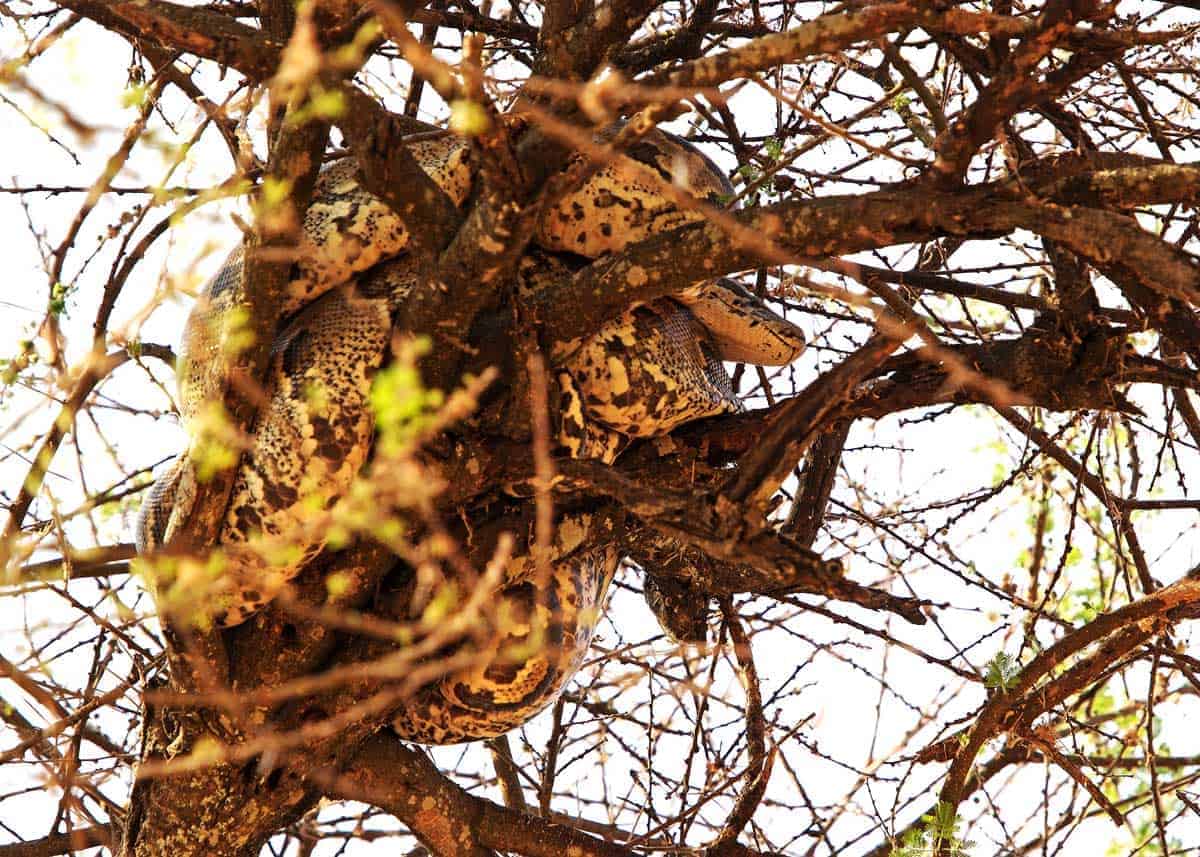
Learn more about the animals of Uganda
26. What’s the difference between an anaconda and a python?
As the two biggest snake species in the world, anacondas and pythons are often confused for one another, but there are some notable differences between the duo.
For starters, anacondas are usually bigger and heavier than pythons. The green anaconda can reach up to 400 – 500 pounds while the African rock python usually hovers around 100 – 200 pounds.
There’s also a regional difference. African rock pythons are found in Africa; anacondas are mostly native to South America.
Finally, anacondas are more water-based than pythons. While it’s true that pythons like to live around lakes and rivers, they can survive in a variety of environments, including the dusty African savanna. Anacondas are more aquatic animals. They do most of their living, hunting and nesting in or around water.
27. Do humans eat African rock pythons? Is it legal? What does it taste like?
There’s a thriving industry for snake meat in Africa. It’s called “bushmeat” since it doesn’t come from a domesticated animal, and “bushmeat markets” can be found from Morocco to Madagascar.
The legality of the practice can vary. It depends on the country. Some of them have strict anti-poaching or conservation laws; others tend to look the other way, especially if there are a lot of rural communities that might starve without the people killing and eating what they can.
There isn’t a lot of anecdotal evidence about the taste of African rock pythons, but other pythons are said to be chewy and sinewy, so they’re probably similar to their relatives.
28. What else eats African rock pythons?
African rock pythons are vulnerable to strong, fast-moving animals like lions, especially after they’ve gorged on a big meal. They aren’t able to flee or constrict as well as they usually do when their bodies are distended.
They’re also quite defenseless when they’re young. Many animals kill and eat small African rock pythons, including birds, frogs, dogs, hyenas, spiders, and other snakes.
In an interesting twist, if the pythons can survive to adulthood, they’ll turn right around and prey on these creatures themselves. It’s a real-world example of the circle of life.
29. Are there any quirks to the African rock python?
African rock pythons are considered a “primitive” kind of snake because they have two lungs while most snakes have only one. They also have hard lumps on their lower bodies.
It’s strange but true: African rock pythons are the uncivilized cousins at snake family reunions.
30. Are African rock pythons nocturnal?
African rock pythons are most active at night, especially when they’re trying to hunt. However, they don’t hate the daytime, and it’s common for them to bask in the sun in winter months to help with their thermoregulation. They’re cold-blooded animals, so it’s important for them to control their body temperature. They just prefer nighttime hunting on the whole.
31. Do African rock pythons have any cultural significance in Africa?
African rock pythons are both prized and feared in African culture. On one hand, they can be valuable investments if you sell their meat and scales, and you’ll have endless bragging rights if you can spear a 15-foot snake slithering through your village.
On the other hand, African rock pythons have been known to kill and eat humans, and plenty of people are terrified of that. This is especially true in rural areas where pythons can overrun and out number tribes.
One famous African rock python was named Omieri. A massive female, she was worshiped by the Luo people of Kenya who viewed her as the goddess of rain and fertility.
She died in the ’70s, but that just gave her a legendary status; there was a drought and widespread crop failure not long after her death, and it was blamed on her death. Her remains are preserved in the National Museum of Kenya and still cherished today.
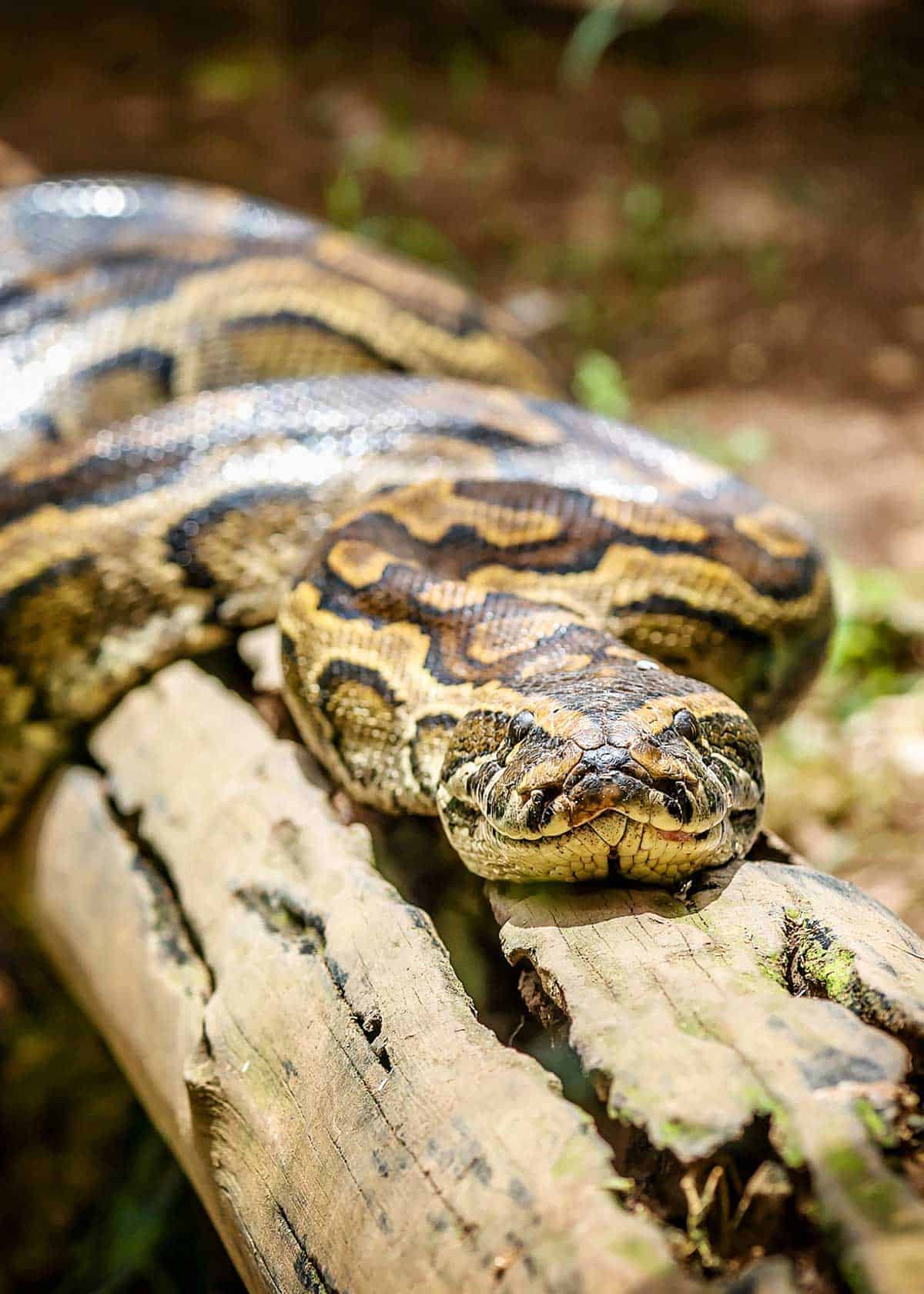
What do you think? Did you enjoy these rock python facts? African rock pythons are fascinating creatures, so it’s worth taking a closer look at how they live and what people think about them. You might not want to step on one, but they can be interesting to look at from behind a digital screen!


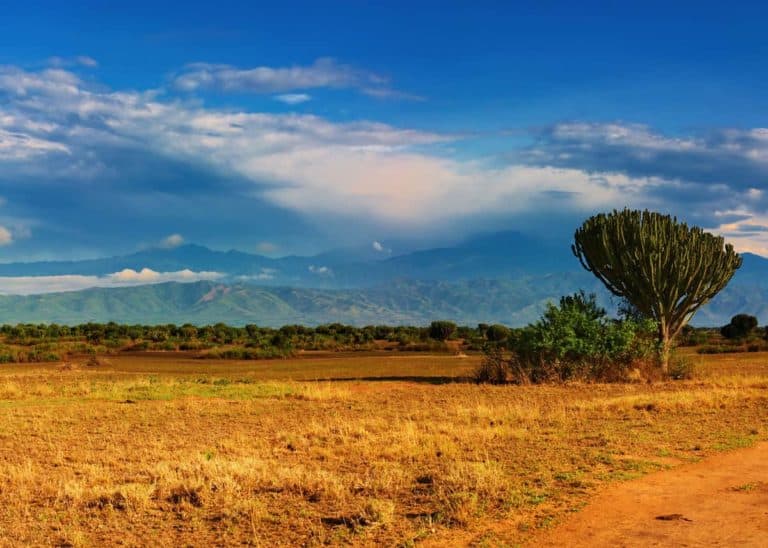
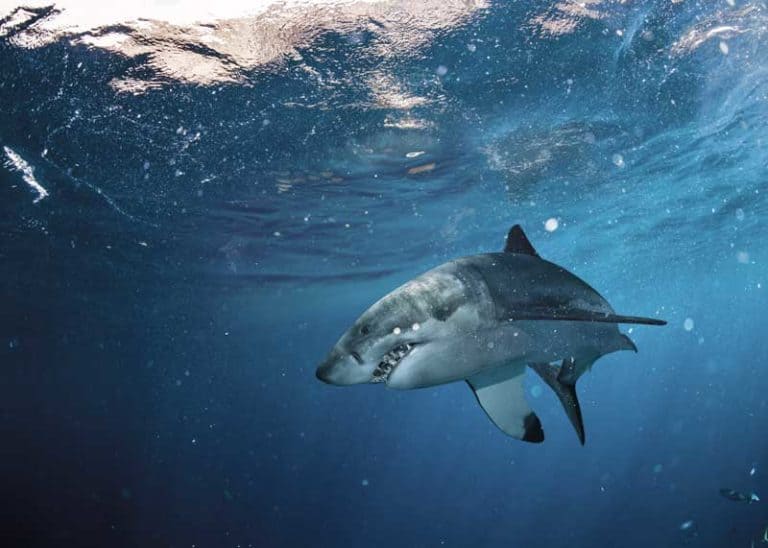

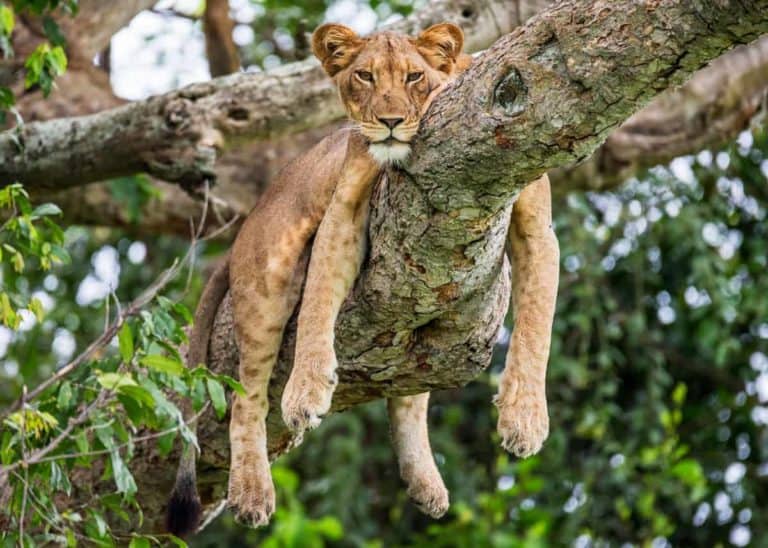
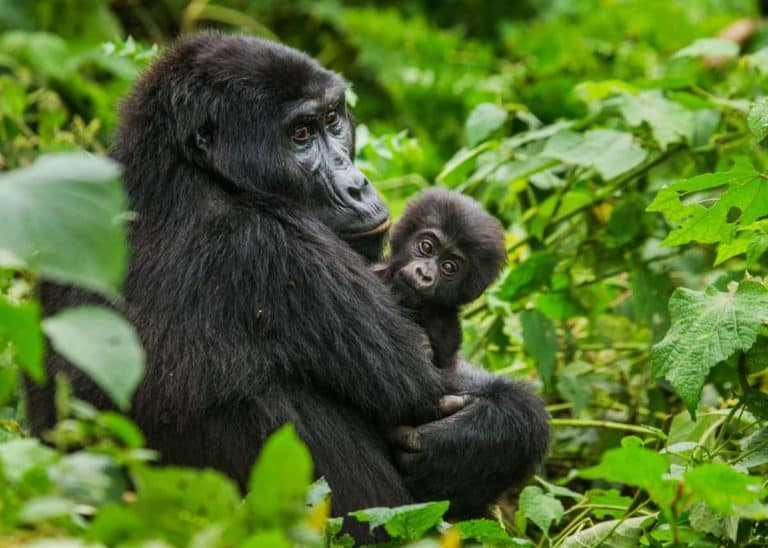
In nigetia I have a 15ft Python sebae in a large pet cage, it likes the company of doves and protects them until hungry, noisy chickens it chases away. It is very very aggressive and strikes twice in a row very quickly
I have an example of a skin from an African rock python I believe came from a 25 foot specimen. It is on the wall of a restaurant in minturn Colorado. I can speak for the provenance for the last 50 years.
A very exciting and detailed article on these species of snakes. Am an educational guide at Haller park in Mombasa Kenya. Acquired profound knowledge about them which will be vital towards my job at the park, a nice place to see these creatures. Thank you
Thanks Lawrence!
It was an interesting long read, but having worked in pythons in captivity, I would recommend a few changes if you don’t mind..!
-their teeth carry bacteria infections
-when its constricting, it doesn’t bite because the power to constrict lies in the power to have the head freely navigating. when we are doing a snake show; you hold the head because by doing it so, it cannot constrict perfectly.
-It can eat an average grown adult human, just like it can swallow a grown Nile crocodile
-they can constrict any of the big cats, more so those that rest on the ground
-cultural significance; there are families in Uganda that have pythons as part of the family members. In such instances, people claim to have produced twins; one of them being a snake!
Thanks for this Joseph!